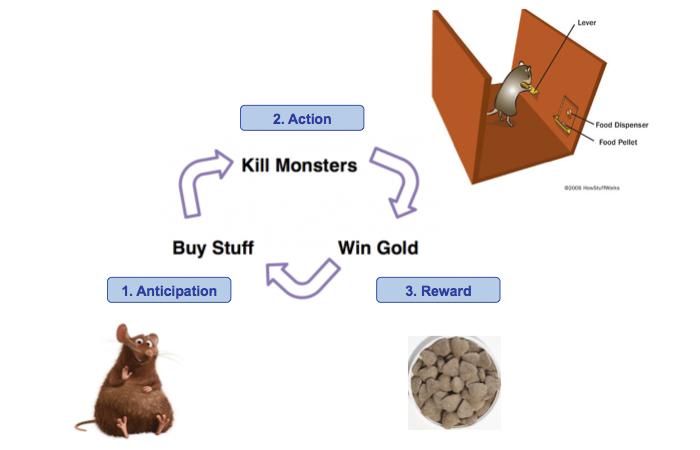The Psychology Behind Addictive Game Loops: Why We Keep Playing
In today’s fast-paced world, video games have become a major source of entertainment for millions globally. But what makes some games incredibly addictive, compelling players to come back again and again? The secret: addictive game loops designed with psychological principles to captivate players’ brains. In this article, we’ll delve deep into the psychology behind addictive game loops, how they work, and why understanding them matters for both gamers and designers.
What Are Addictive Game Loops?
Game loops are the core repetitive cycles that form the foundation of gameplay. Addictive game loops are carefully crafted loops that keep players engaged by leveraging psychological triggers like reward, challenge, and progression. At their essence, they create a compelling “just one more round” effect, making it hard for players to disengage.
Core Components of Addictive Game Loops
- Action: The player performs a task or decision (e.g., fighting, collecting, exploring).
- Reward: The game provides some form of positive feedback or incentive (points, loot, progression).
- Progression: Players see measurable growth or improvement (levelling up, unlocking items).
- Challenge: The increasing difficulty compels players to improve their skills.
- Repeat: The loop restarts, cycling the player back into the gameplay.
The Psychology Fueling Addictive Game Loops
1. Operant Conditioning and Variable Rewards
Behavioral psychology tells us that operant conditioning – rewarding specific behaviors – strongly influences repetition. Games use variable ratio reinforcement schedules, where rewards appear unpredictably but frequently enough to keep players hooked. Think of loot drops, treasure chests, or randomized rewards-the uncertainty stimulates dopamine release, rewarding the brain and encouraging repeated play.
2. The Dopamine Effect
Dopamine, known as the “feel-good” neurotransmitter, is heavily involved in motivation and reward processing. Whenever players receive rewards or achieve milestones, dopamine is released, creating pleasurable feelings and reinforcing the game-playing behavior.
3. Flow State and Engagement
The game loop often guides players into a flow state, a mental condition where they experience deep focus and lose track of time. Balanced challenges and diverse goals prevent boredom and frustration, allowing for sustained engagement and immersion.
4. Goal Setting and Achievement
Psychologically, humans are driven by goal-oriented behavior. Addictive game loops break down long-term objectives into smaller, attainable goals – daily quests, missions, and unlockables-fueling a steady sense of achievement and purpose.
5. Social Validation
Addictive loops often integrate social components such as leaderboards, multiplayer battles, and sharing achievements. Positive social feedback fosters belonging and friendly competition, boosting emotional investment.
Common Types of Addictive Game Loops
| Game Loop Type | Description | Example |
|---|---|---|
| Progression Loop | Players complete tasks to level up or unlock content. | RPG character leveling |
| Resource Management Loop | Collecting and spending resources to build or upgrade. | FarmVille’s crop cycles |
| Combat Loop | Engage in battles and improve skills over time. | Fighting game combos |
| Exploration Loop | Discovering new areas, items, or stories. | Open-world exploration in Zelda |
Benefits of Understanding Addictive Game Loops
Knowing the psychological underpinnings of addictive game loops can benefit both players and developers alike.
- For players: Awareness can help manage gaming time and avoid unhealthy addiction.
- For developers: Insight into player motivation aids in designing more engaging and ethical games.
- For educators and parents: Better understanding of gaming behaviors informs balanced media use guidelines.
Practical Tips to Manage Engagement With Addictive Games
If you love gaming but want to avoid falling into unhealthy patterns, these tips can help you maintain a healthy balance:
- Set time limits: Use timers or app blockers to control play sessions.
- Take regular breaks: Step away after completing loops or milestones.
- Be mindful: Recognize signs of compulsive play and take conscious control.
- Alternate activities: Mix gaming with other hobbies or physical exercise.
- Play socially: Engage with friends to keep gaming positive and interactive.
Case Study: How Fortnite’s Game Loop Hooks Millions
Fortnite provides a great example of effective addictive game loops in modern gaming. Its loop includes:
- A short 20-minute match (action and challenge)
- Randomized loot and weapon choices (variable rewards)
- Progression with seasonal battle passes and cosmetics (goal setting)
- Strong social interactions with squads and streaming communities
This layered loop triggers dopamine release and social validation, making it difficult for players to stop after just one match, driving daily engagement numbers into the millions.
Conclusion: The Fine Line Between Engagement and Addiction
Understanding the psychology behind addictive game loops unlocks valuable insights into why games can captivate us so deeply. By combining rewards, challenges, and social validation, game designers tap into fundamental human drives that encourage repetitive play. While these game loops offer incredible entertainment and even cognitive benefits, it’s important to recognize the potential for unhealthy addiction. Players who stay informed can maintain balance and enjoy gaming as a positive, fulfilling part of their lives. Ultimately, the power of addictive game loops lies in their design – a testament to the fascinating intersection of psychology and interactive entertainment.











